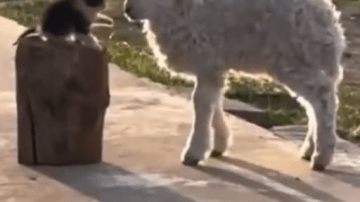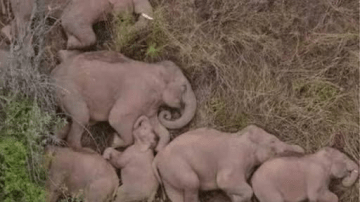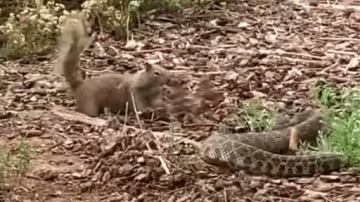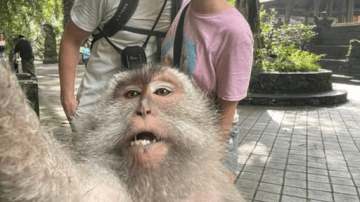For fifty long years, the only thing that ever touched Raju’s ankles were chains — heavy, rusted, and cruel. They were the kind that cut into skin, the kind that didn’t just wound flesh but broke spirit.
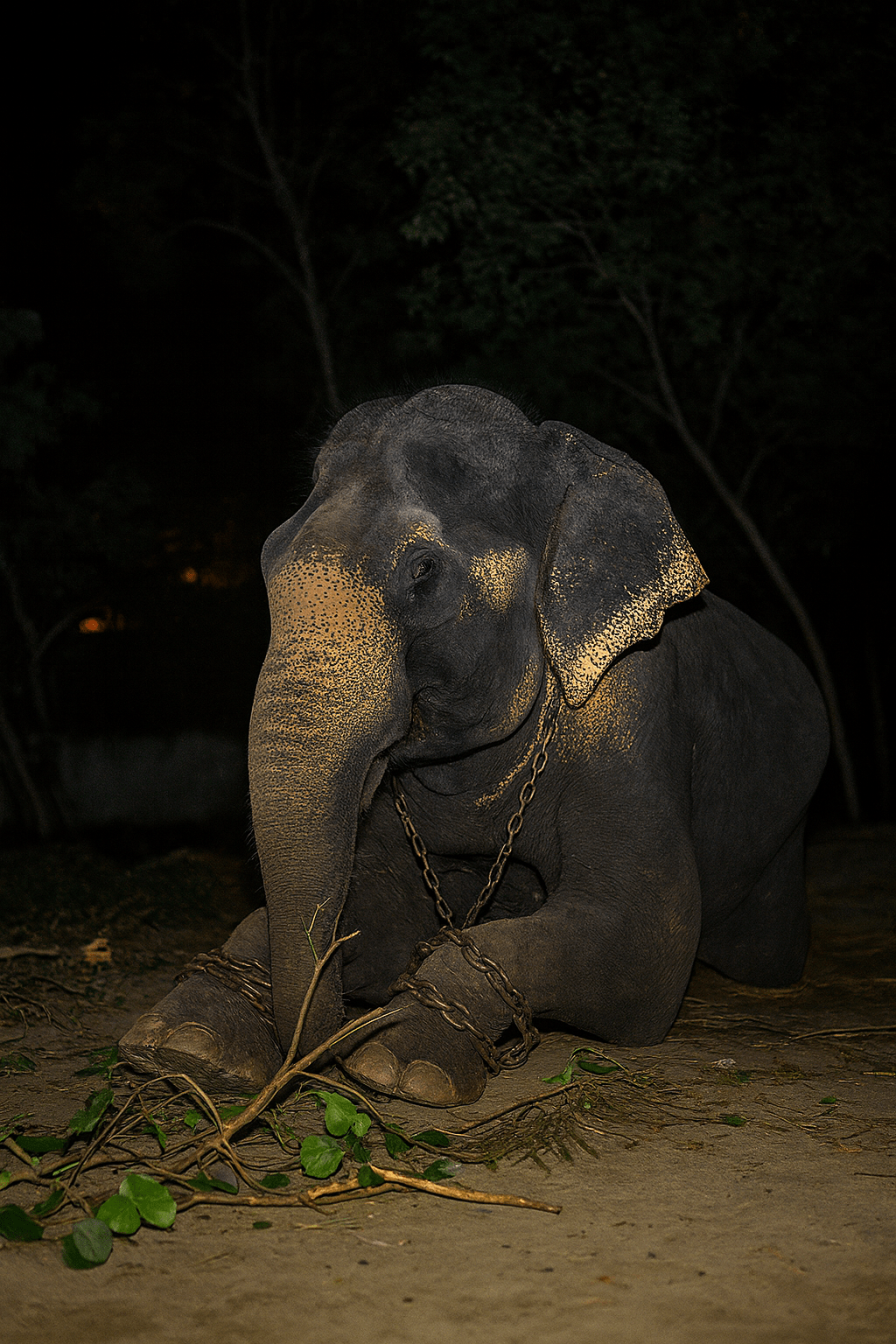
Born free in the forests of India, Raju was meant to roam under open skies, to bathe in rivers, to feel the earth beneath his feet. But instead, his life became a story of captivity and sorrow — half a century of pain, loneliness, and survival.
He was an Indian elephant, passed between twenty-seven owners, each one exploiting him in new and heartbreaking ways.
Some forced him to haul tourists for hours under the burning sun. Others made him stand outside temples, swaying from exhaustion, holding out his trunk for coins that were never his to keep.
He was starved, beaten, and forgotten.
At night, Raju slept in chains so tight they tore his flesh. He ate whatever he could find — paper, plastic, garbage — anything to fill the emptiness in his belly. Yet somehow, through every whip, every wound, and every lonely night, a spark inside him refused to die.
It was small. But it was hope.
The Night of the Rescue
In July 2014, after decades of silent suffering, Raju’s miracle finally came.
A team from Wildlife SOS, an Indian nonprofit devoted to rescuing abused animals, had spent months investigating his case. When they finally obtained legal permission to free him, they prepared for one of the most daring rescues in their history.
But Raju’s captor — the last of the twenty-seven men who had owned him — refused to let him go. The team knew they had to act quickly, and quietly.
So under the light of a thin moon, with the air heavy and still, ten rescuers arrived with veterinarians, forestry officials, and trucks ready to carry him to safety.
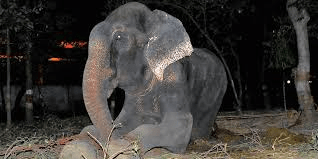
When they reached him, the scene was almost too painful to bear.
Raju’s body was covered in scars and open wounds. Chains with metal spikes were wrapped around his legs so tightly that they had cut deep into the skin. He stood trembling, his eyes dull, his head hanging low. Every time he tried to move, the chains bit deeper.
One of the rescuers, Pooja Binepal, later said, “Raju was in chains 24 hours a day — an act of unbearable cruelty. We were speechless when we saw the tears rolling down his face.”
Yes, tears.
As the team approached, Raju began to weep. The rescuers froze. The air around them seemed to stop moving. These were not random drops of water or dust — they were slow, deliberate tears, falling from eyes that had known nothing but pain.
It was as if the weight of fifty years had finally found release.
When the Chains Fell
The rescuers worked quickly, cutting through layers of chain that had long fused with skin. Every movement brought both agony and relief. Raju didn’t resist; he stood perfectly still, as if he understood that this was the moment he had waited for all his life.
Finally, after nearly an hour, the last shackle fell to the ground. The metallic clatter echoed into the night — a sharp, final sound that marked the end of his suffering.
Raju lifted one foot. Then another.
For the first time in fifty years, he could move freely.
He raised his trunk toward the sky, as if in gratitude. Some rescuers swore they heard a sound escape him — part trumpet, part sigh — a deep, haunting note that carried every emotion at once: pain, relief, and something that felt like joy.
Pooja later said, “We knew in our hearts that he realized he was free. That night, Raju knew what freedom was.”
The Road to Freedom
It was four in the morning by the time Raju stepped into the transport truck. His legs were weak, his eyes heavy with exhaustion, but he climbed aboard willingly — as though he trusted that whatever came next had to be better than what he was leaving behind.
As the truck rolled down the highway toward Wildlife SOS’s Elephant Conservation and Care Centre near New Delhi, one of the volunteers placed a hand on his side and whispered softly, “You’re safe now.”
It was the first sunrise he had ever watched without chains.
When they arrived, veterinarians rushed to treat his wounds and infections. They gave him antibiotics, fresh fruit, and buckets of clean water. At first, Raju hesitated, unsure if he was allowed to eat. Then, as if realizing this was real, he devoured everything — bananas, melons, jackfruit — until he could eat no more.
For the first time in fifty years, his stomach was full.
Learning to Be an Elephant Again
Healing took time — months, even years. The physical wounds began to fade, but the emotional ones lingered longer.
He flinched at sudden sounds, hesitated before sleeping, and often stood awake through the night, as if afraid the freedom was temporary.
But slowly, surrounded by patient caretakers, Raju began to trust again.
At the sanctuary, he met three other elephants — Maya, Phoolkali, and Laxmi — each a survivor of their own story of abuse. They approached him gently, wrapping their trunks around his in greeting.
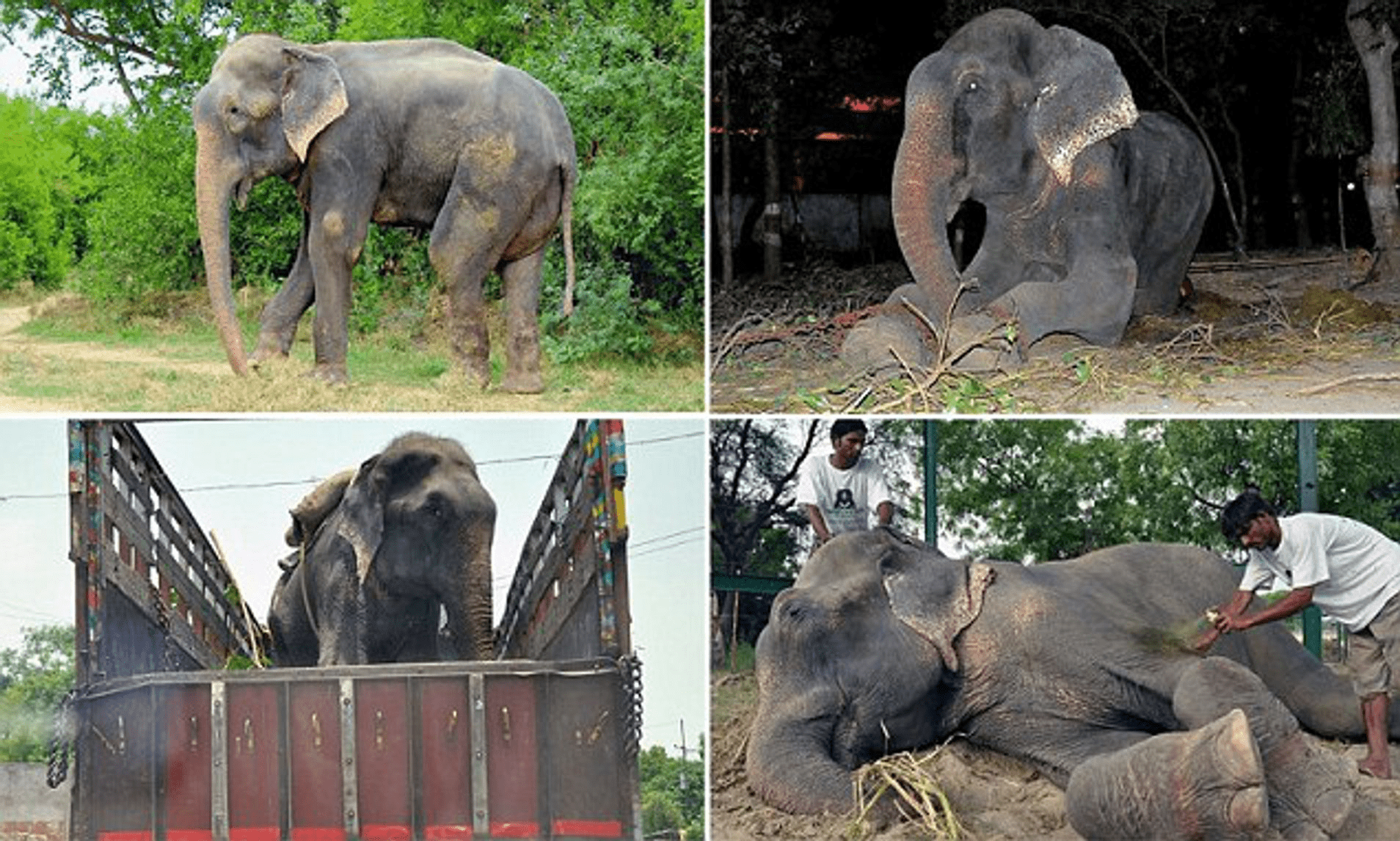
That day, something shifted.
Raju was no longer alone.
The four became inseparable — bathing together, eating side by side, and walking beneath the open sky. Sometimes, Raju could be seen standing by the water, eyes half-closed, swaying softly in the wind. Whether he was remembering or forgiving, no one knew.
The World Reacts
When Wildlife SOS shared photos of Raju’s rescue, the world could hardly believe them. An elephant crying as his chains were cut — it sounded like something out of a dream.
But the images were real, and they spread across the globe in hours. Millions of people saw them — people who had never thought about animal suffering before — and they cried, too.
Donations poured in. Letters of love and gratitude arrived from every continent.
Wildlife SOS used that momentum to rescue more elephants, many of them from the same horrific conditions Raju had endured — chained, starved, and forgotten.
Raju had become their symbol. A face of compassion in a world that desperately needed to remember what compassion looks like.
Ten Years Later
Today, Raju is over sixty years old. His pace is slower, his steps deliberate, but his days are peaceful. He spends his mornings walking through open fields and his afternoons splashing in the water, throwing mud across his back like a child rediscovering play.
Visitors to the sanctuary often ask, “Is this the elephant who cried?”
And the caretakers smile, pointing to him. “Yes,” they say. “That’s Raju. He’s the one who taught the world that even after fifty years in chains, the heart can still recognize freedom.”
At night, when the sky above the sanctuary turns dark and still, Raju lies down beneath the stars. No chains. No pain. Just the gentle hum of crickets and the rustle of leaves in the warm wind.
He has learned, at last, to rest.
The Legacy of Raju
Raju’s story isn’t just about one elephant’s rescue. It’s about every living being’s capacity to endure, to heal, and to hope.
He reminds us that cruelty may last a lifetime, but compassion can change everything in a single night.
When the chains fell, they didn’t just free an elephant — they awakened something in millions of human hearts.
Raju’s tears were not only tears of pain. They were the tears of every silent creature waiting for kindness, every soul still trapped behind invisible bars.
And in that unforgettable moment — under the pale Indian moon — the world witnessed something extraordinary:
The day an elephant cried, not because he was broken, but because he was finally free.

